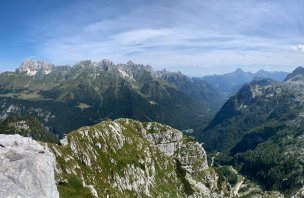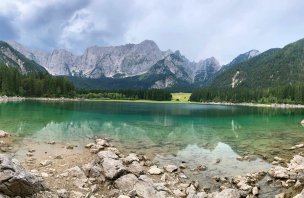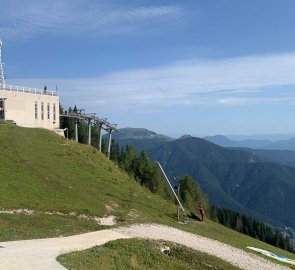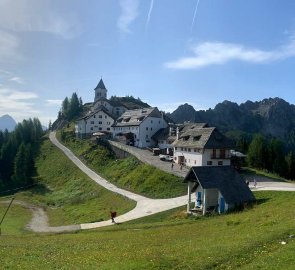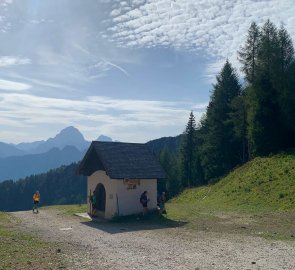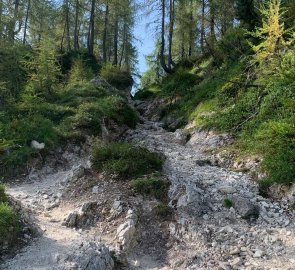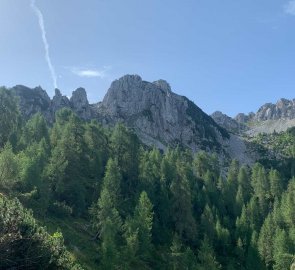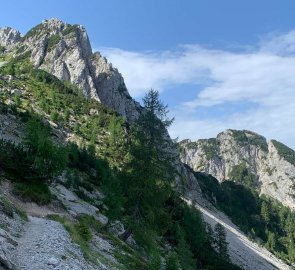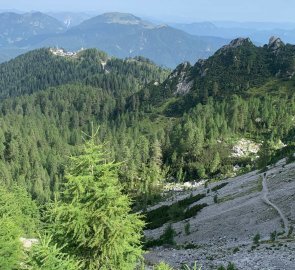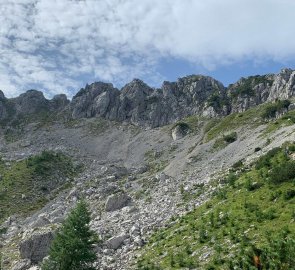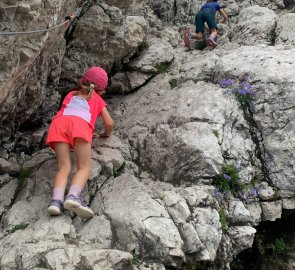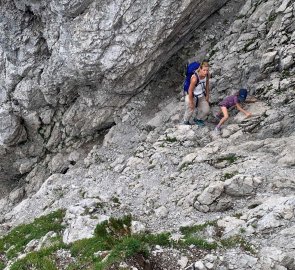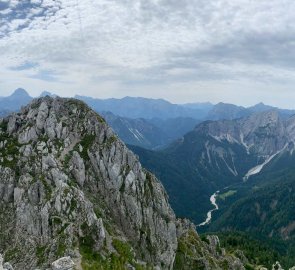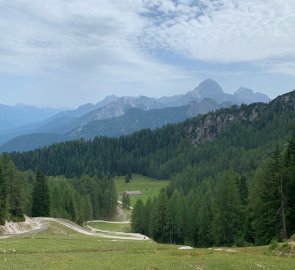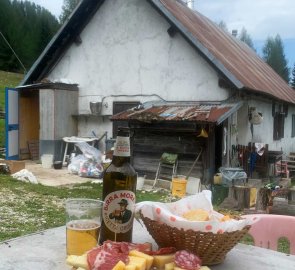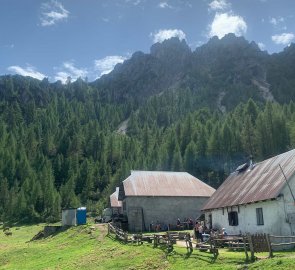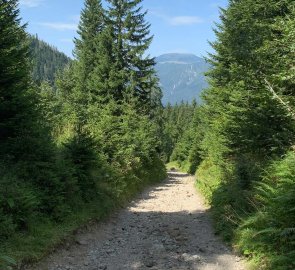Trek to the Cima del Cacciatore from Monte Lussari
Mountain range, region / State
/ Italy
Season
Summer
23. 08. 2024
Difficulty
1 / 5
Elevation
↑ 406 m
↓ 1350 m
Length
9.7 km
5 hours
Altitude
max. 2066 m n.m.
min. 805 m n.m.
Trek from the Monte Lussari pilgrimage site to the Cima del Cacciatore
Starting point
Upper station of the cable car to Monte Lussari. The cable car leaves from the town of Camporosso, next to the more famous town of Tarvisio. The price of the cable car for an adult is 13,5 Euro one way ride.
Description of the hike
The ascent to the Cima del Cacciatore mountain was made much easier by a cable car, which took us from the valley to the pilgrimage site of Monte Lussari at an altitude of about 1,700 m above sea level. The view of this magical place is truly unique. The picturesque houses surrounded by mountain peaks are truly unique.
After visiting this place, we set off on a hike towards the Cima del Cacciatore mountain. First, we walk along a wide path. Soon, however, we joined a forest path and followed it towards the mountain. At times the climb was steeper, but mostly the trail cut into the hillside and so we continued slowly towards the rocks. After reaching the mountain basin below the main ridge, the trail gained elevation rapidly. We continued to the start of an easy ferrata that leads directly to the top of the mountain. This is an easy ferrata, no one here even had a ferrata set. But of course you have to have some experience with moving in rocky terrain. This part of the climb can be avoided by following the trail. However, it is also slightly challenging. After climbing to the top of the mountain, we enjoyed the beautiful views. However, there were quite a few people and the summit is not very wide. Therefore, we soon headed back.
We followed the same path until we almost reached Monte Lussari. At the chapel, however, we turned off and continued down the slope into the valley. Soon, however, we came upon the Malga Lussari shepherd's hut, where we stopped for refreshments. The place is really amazing. It's like time has stopped here. No luxury, but an honest old cottage with very genuine service. However, the food was delicious. After this rest we continued on the wide path in the valley descending to the cable car. It is quite a long and uninteresting journey and the fatigue of the descent was evident on the members of the expedition. Eventually we reached the lower cable car station and drove back to Tarvisio for a well-deserved late lunch.
Difficulty
The route is for the most part very easy and follows mountain trails or wide forest paths. The exception is a short ferrata just below the summit of the Cima del Cacciatore. This is a very easy ferrata of A difficulty. There are steel ropes stretched across it, the first metres are more in the rock, the second part is more in the rubble. No one had equipment for ferrata here, the difficulty can be compared to the chains in the High Tatras or Roháče.
Water availability
There are several restaurants on Monte Lussari. We topped up our fluids at the crazy Malga Lussari hut on the descent into the valley.
Sleeping options
There are a large number of accommodation facilities in the valley around Tarvisio.
Mountain peaks
From the top of the Cima del Cacciatore at 2,071 m above sea level, you can enjoy beautiful views of the Julian Alps, but with good visibility you can also see the Austrian Alps or the Dolomites.
Danger
Most of the trail is perfectly safe, following a marked trail. The only more difficult section is the ferrata just below the summit. Here, a certain amount of stepping on rock and rubble is required. For the less experienced I recommend a ferrata set, but it can certainly be done without one. The ferrata can be bypassed by a trail, but from what I've seen, the difficulty of the trail is not much less than the ferrata itself.
Food
The restaurants are on Monte Lussari. We used the Malga Lussari and we did not regret it. Here time stood still, the service is like something out of a bizarre movie, donkeys walk between the tables. However, the homemade cheese and salami is delicious.
Attractions
Monte Lussari is a famous pilgrimage site in the surroundings of Tarvisio. The first chapel was built here in 1360. Since the 16th century a monastery has stood on the mountain. The place was very popular and gradually up to 100,000 believers came here every year. During the First World War, the mountain was used by Austrian soldiers, but after an artillery attack by the Italian army, the site was completely destroyed. It was only rebuilt after the war in 1924.
